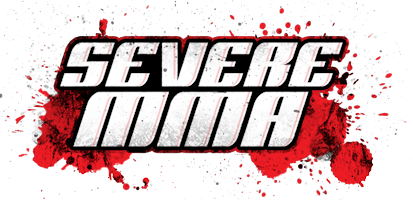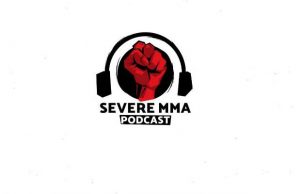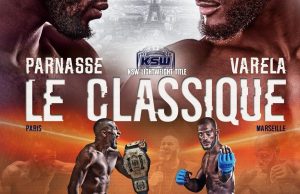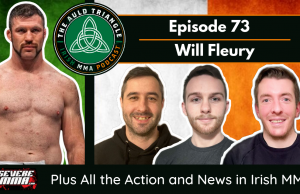
When Dan Henderson won a split decision over Rich Franklin on January 17th, 2009 MMA still had a long way to go with the Irish people. Over 9,000 people packed into the 02 arena in Dublin that Saturday night to see UFC 93 – just as they will next Saturday night. But it’s not the same.
In 2009 the arena sold out but, unlike today, it couldn’t have sold out 5 times over. The diehard fans of MMA turned out in force but the casual fans were practically non existent. The sport was new to, not only the mainstream, but to the people participating in it on this side of the pond. (The foundations of which my colleague Peter Carroll has eloquently described over the last few weeks.)
The sole Irishman on the card was Tom Egan who lost a first round technical knockout to Englishman John Hathaway. Egan was cornered by SBG Ireland’s John Kavanagh that night who, it turned out, wouldn’t corner another Irishman in the UFC for nearly four years. Egan and Kavanagh both subsequently admitted it was a step too big, too early. Irish MMA wasn’t ready. It was clear.
The night itself went off without a hitch as a myriad of world class fighting went on show. The whole spectacle, though, was marred by the lead up.
On a national broadcasting radio phone-in days before UFC 93 Joe Duffy, one of the countries most popular DJs, hosted what can only be described as a hatchet job. Callers provided information of deaths in the UFC (which were non-existent), the rules (or lack there of) and an all around barbaric, unsanctioned, gladiatorial, back alley brawl for thugs and criminals. A view echoed by respected boxer Barry McGuigan on the show but refuted by the well informed Wayne McCullough who was fighting a losing battle.
Those who studied mixed martial arts could see through the mud on the radio that day but those who knew little about it just saw something malicious and gross.
Sometimes, though, the smallest shoots survive and the weeds eventually die.
Over the next few years the stigma around “Cage Fighting” dwindled as the obnoxious and uninformed radio hosts didn’t bother with something which wasn’t on their front door. Kavanagh expanded his gym and was the base for others to pop up in every province.
And then, Conor McGregor. The brash, brazen, loud-mouth Dubliner with a personality to excite a tree and a left hook to knock one down. Kavanagh spent years collecting the tinder for Irish MMA’s explosion, McGregor found the spark to light it.
He was the most exciting prospect to come out of Europe in years and with eight stoppage wins in a row earned his way to two Cage Warriors belts.
It was Norman Parke, one of McGregor’s local rivals, though, who had the first big breakthrough in 2012 winning the TUF Smashes series held in Australia. And it wasn’t long before the signings spread.
In Sweden on April 6th, 2013, four years after the first Dubliner stepped into the octagon, his teammate followed suit. This time, he was ready. McGregor came in with a tonne of hype behind him as a result of a barrage of smack talk. But he backed it up, tearing Marcus Brimage apart in just sixty seven seconds with a vicious striking attack. He turned sceptics into believers in just over a minute. The story was only beginning.
In his next fight it seemed like everything was falling into place. McGregor travelled to Boston for a fight with Max Holloway but was left with Kavanagh as his only cornerman due to visa restrictions in the wake of the Boston marathon bombings. As luck would have it, UFC 93’s Tom Egan was living in Boston at the time and stepped in to corner McGregor as he won a unanimous decision.
That was over eleven months ago and a lot has happened in the mean time. McGregor, who tore an ACL during the bout, hasn’t fought since then. But the Irish influx has kept on going.
Flyweight Neil Seery of Team Ryano was the next to get the call up, followed by Cathal Pendred and Chris Fields on The Ultimate Fighter 19 reality show and Aisling Daly for the 20th iteration which has the inaugural strawweight title on the line. And most recently Paddy Holohan.
Add all these events together and you have a slow progression towards the mainstream. MMA websites popped up. The sport was discussed on almost every national radio station with, not a negativity, but an admiration. A documentary was shown in prime time on RTE and even the Late Late Show had McGregor and Pendred as guests – an honour bestowed on only the most deserving of people.
If Joe Duffy were to have the same phone in now he would be met with a plethora of respectable mixed martial arts fans only too happy to explain why this sport isn’t what it was made out to be five years ago. He would be told we have role models like Conor McGregor, Cathal Pendred, Norman Parke and Aisling Daly who have excelled to the elite of their sport through hard work and dedication.
He would be told that the sport is no longer stuck on Bravo in the middle of the night and that it is, in actual fact, a sanctioned, fair sport. Mixed martial arts isn’t looked down upon in Ireland today. It’s seen as a sport which has credibility and a celebrity athlete heading it up.
MMA in ireland has come a long way since UFC 93 and hopefully has a lot further to go. Saturday night live on terrestrial television station 3e, five Irishmen will fight inside the Octagon. They’ll fight for themselves, their pride, their family, their country and, win or lose, the culmination of 5 years (and more) hard work.
It’s no longer 2009 where nobody is ready for MMA in Ireland.
The fighters are ready now, the media are ready now, the fans are ready now and on Saturday night, it’s time to show the world what Ireland is all about.



